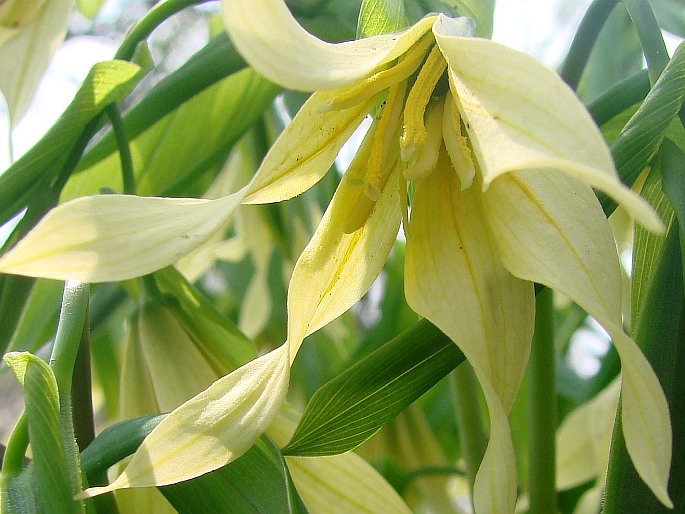Family: Colchicaceae DC.

Distribution: Eastern part of North America – southeastern Canada and northeastern states of USA, from southern Quebec to eastern Oklahoma, from northern Alabama to southeastern Manitoba.
Ecology: It grows in moist woods, on calcareous to neutral soils, from coast up to 1100 m elevation. It flowers from April to June.
Description: Perennial herb with short rhizomes and fleshy roots. Stems erect, rounded, 1–several, 1-branched, 20–75 cm tall, glabrous, bearing 1 leaf below lowest branch. Leaves perfoliate, elliptic to ovate-oblong, 6–13.5 × 2–6.5 cm, entire, often pubescent on abaxial veins, apex acute. Flowers 1–3(–4) per stem; peduncles 1–2.5 cm, with 1 perfoliate bract, tepals 6, 25–50 mm long and 3–10 mm wide, yellow. The fruits are obovoid capsules, 3-lobed, 1–1.5 cm long.
Use: It is an attractive plant for gardens, popular also in Europe, prefers a moist, humusy soil and part shade.
Threat and protection: It is an endangered species in Connecticut and New Hampshire.
Note: The genus contains 5 species, all occur in North America.







These images were taken in culture, Europe (April 12 and 25, 2014).


